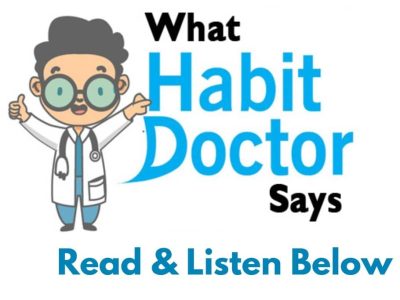The process of building a habit is often divided into four simple steps: cue, craving, response, and reward. Breaking it down into these fundamental parts can help us understand what a habit is, how it works, and the way to enhance it. This four-step pattern is the backbone of each habit, and your brain runs through these steps within the same order whenever. First, there’s the cue. The cue triggers your brain to initiate a behaviour. Our prehistoric ancestors were listening to cues that signalled the situation of primary rewards like food, water, and sex. Today, we spend most of our time learning cues that predict secondary rewards like money and fame, power and standing, praise and approval, love and friendship, or a way of private satisfaction.
The cue is the first indication that we’re on the brink of a gift, it naturally results in a craving. Cravings being the second step of the habit loop are the motivational force behind every habit. Without some level of motivation or desire, without craving a change, we wouldn’t have any reason to act. You do not crave smoking a cigarette, you crave the sensation of relief it provides. You’re not motivated by brushing your teeth but rather by the sensation of a clean mouth. Cravings differ from person to person. In theory, any piece of data could trigger a craving, but in practice, people aren’t motivated by an equivalent cue. For a gambler, the sound of slot machines is often a potent trigger that sparks an intense wave of desire. for somebody who rarely gambles, the jingles and chimes of the casino are just ground noise. Cues are meaningless until they’re interpreted.
The third step is the response. The response is the actual habit you perform, which may take the shape of an idea or an action. Whether a response occurs depends on the amount of self-motivation and the way much friction is related to the behaviour. Your response also depends on your ability. A habit can occur as long as you’re capable of doing it. If you would like to dunk a basketball but can’t jump high enough to succeed in the ring, well, you’re out of luck.
Finally, the response delivers a gift. Rewards are the top goal of each habit. The cue is about noticing the reward. The craving is about wanting the reward. The response is about obtaining the reward. The first purpose of rewards is to satisfy your craving. Yes, rewards provide benefits on their own. Food and water deliver the energy you would like to survive. Getting a promotion brings extra money and respect. But the more immediate benefit is that rewards satisfy your craving to eat or to realize status or to win approval. Secondly, rewards teach us which actions are worth remembering within the future. Your brain may be a reward detector. As you set about your life, your sensory nervous system is continuously monitoring which actions satisfy your desires and deliver pleasure. Feelings of delight and disappointment are a part of the feedback mechanism that helps your brain distinguish useful actions from useless ones. Rewards close the feedback circuit and complete the habit cycle. If behaviour is insufficient in any of the four stages, it’ll not become a habit.
Make the behaviour difficult and you won’t be ready to roll in the hay. And if the reward fails to satisfy your desire, then you’ll not have any reason to try it again within the future. Without the primary three steps, the behaviour won’t occur. Without all four, the behaviour won’t be repeated.
We can split these four steps into two phases: the matter phase and therefore the solution phase. The matter phase includes the cue and therefore the craving, and it’s once you realize that something must change. The answer phase includes the response and therefore the reward, and it’s once you act and achieve the change you desire. All behaviour is driven by the will to unravel a drag. Sometimes the matter is that you simply notice something good and you would like to get it and the other times, you are experiencing pain and you would like to alleviate it. Either way, the aim of each habit is to unravel the issues you face.
Get in touch with Living In Wellbeing for online assistance to develop habits like starting new habits that actually stick around



Your blog is like a garden in the desert, blooming with the flowers of health wisdom. Your insights are the water that nourishes my well-being